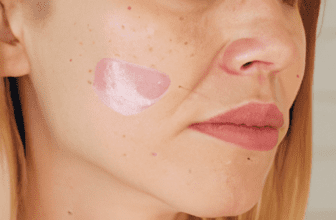Chemical Peels for Hyperpigmentation
-
Table of Contents
- Chemical Peels for Hyperpigmentation: A Comprehensive Guide
- Key Takeaways
- Introduction: Unveiling the Power of Chemical Peels
- Chemical Peels: A Potent Solution for Hyperpigmentation
- Types of Chemical Peels
- The Importance of Professional Application
- Post-Treatment Care and Maintenance
- FAQ Section
- 1. Are chemical peels safe?
- 2. How often should I get a chemical peel?
- 3. Can I use makeup after a chemical peel?
- 4. How long does it take to see results from a chemical peel?
- 5. Can all skin types benefit from chemical peels?
- Conclusion: The Power and Potential of Chemical Peels
- Further Analysis
Chemical Peels for Hyperpigmentation: A Comprehensive Guide

[youtubomatic_search]
Key Takeaways
- Chemical peels can be an effective treatment for hyperpigmentation.
- There are different types of chemical peels, each with varying levels of intensity and results.
- Chemical peels should be performed by a professional to avoid potential skin damage.
- Post-treatment care is crucial for achieving the best results and minimizing side effects.
- Chemical peels are not a one-time solution and may require multiple sessions for optimal results.
Introduction: Unveiling the Power of Chemical Peels
Hyperpigmentation, a common skin condition characterized by dark patches on the skin, can be a source of distress for many. While there are numerous treatments available, one that has gained significant attention is the use of chemical peels. This article delves into the efficacy of chemical peels in treating hyperpigmentation, the different types available, and the importance of post-treatment care.
Chemical Peels: A Potent Solution for Hyperpigmentation
Chemical peels involve the application of a chemical solution to the skin, causing it to exfoliate and eventually peel off. This process reveals a new layer of skin that is usually smoother and less pigmented. According to a study published in the Journal of Cutaneous and Aesthetic Surgery, chemical peels can significantly improve hyperpigmentation, with patients reporting up to 50-75% improvement in their condition.
Types of Chemical Peels
There are three main types of chemical peels: superficial, medium, and deep peels. Superficial peels, often referred to as “lunchtime peels,” use mild acids like alpha-hydroxy acid and are ideal for treating mild hyperpigmentation. Medium peels, which use trichloroacetic acid, penetrate deeper and can treat moderate skin discoloration. Deep peels, using phenol, penetrate several layers of skin and can treat severe cases of hyperpigmentation. However, they come with more potential side effects and a longer recovery time.
The Importance of Professional Application
While there are at-home chemical peel kits available, it’s crucial to have these treatments performed by a professional. Incorrect application can lead to burns, scarring, and even more hyperpigmentation. A study in the Journal of the American Academy of Dermatology found that complications occurred in 15.8% of at-home chemical peel cases, compared to only 4.4% of professional treatments.
Post-Treatment Care and Maintenance
Post-treatment care is crucial in achieving the best results from a chemical peel. This includes avoiding sun exposure, using a high-SPF sunscreen, and keeping the skin moisturized. Additionally, chemical peels are not a one-time solution. Depending on the severity of the hyperpigmentation, multiple sessions may be required to achieve optimal results.
FAQ Section
1. Are chemical peels safe?
When performed by a professional, chemical peels are generally safe. However, they can cause side effects like redness, peeling, and sensitivity to the sun.
2. How often should I get a chemical peel?
The frequency of chemical peels depends on the type of peel and your skin condition. Superficial peels can be done every 2-5 weeks, while medium peels can be repeated every 3-9 months.
3. Can I use makeup after a chemical peel?
It’s best to avoid makeup for at least a week after a chemical peel to allow your skin to heal properly.
4. How long does it take to see results from a chemical peel?
Results can be seen as soon as the skin heals, typically within 1-2 weeks. However, multiple sessions may be needed for more noticeable results.
5. Can all skin types benefit from chemical peels?
While chemical peels can benefit most skin types, they may not be suitable for very sensitive skin or for those with certain skin conditions. Always consult with a professional before undergoing a chemical peel.
Conclusion: The Power and Potential of Chemical Peels
Chemical peels offer a potent solution for those struggling with hyperpigmentation. By understanding the different types of peels, the importance of professional application, and the necessity of post-treatment care, individuals can make an informed decision about incorporating chemical peels into their skincare routine. While they may not be a one-time solution, with patience and consistency, chemical peels can significantly improve skin discoloration and boost overall skin health.
[youtubomatic_search]
Further Analysis
As we delve deeper into the world of skincare and hyperpigmentation treatments, it’s clear that chemical peels hold a significant place. They offer a potent, albeit potentially intense, treatment option that can yield dramatic results. However, they should not be taken lightly. Professional application and diligent post-treatment care are crucial to achieving the desired results and avoiding potential complications. As with any skincare treatment, it’s essential to consult with a professional to determine the best course of action for your specific skin needs.





